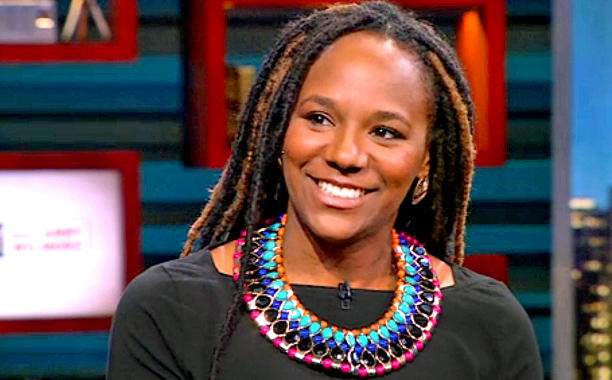
Bree Newsome — the activist who brought down the Confederate flag flying outside the Columbia, S.C. capitol building in 2015 — shared a few harrowing details of that June day with a Cleveland audience rapt at attention.
“A supervisor came over and directed the two officers at the bottom to tase me,” she recounted for a hushed crowd of more than 150 at John Carroll University. “Now, being attached to a metal pole, that could have electrocuted me. At that point, James (Tyson, a white ally) grabbed the pole and said, ‘If you electrocute her, you’ll have to electrocute me too.’ And then they backed away.”
Newson took her bold action amid a renewed debate about the legitimacy of flying the Confederate flag. Just ten days before her climb to the top of that 30-foot flagpole, Dylann Roof murdered nine people studying the Bible at Charleston’s Emanuel African Methodist Episcopal Church. Roof decorated his website with symbols of white supremacy and photos of himself with the Confederate flag.
Dozens of South Carolina activists met and decided the flag – aloft on statehouse grounds since 1961 – had to go. Newsome, 30 at the time, volunteered to climb the pole, and Tyson volunteered to accompany her. The two knew they risked arrest, if not serious bodily harm. The night before the climb, Newsome said she “prayed more fervently than ever before.”
“You come against me with hatred and oppression and violence,” Newsome bellowed from the top of the pole. “I come against you in the name of God. This flag comes down today.” In video of the removal, Newsome is dressed in all black, thick locs cascading down her back as she looks skyward during her arrest, reciting Psalm 23.
At several points throughout her talk, Newsome paused to link modern events — like the shooting death of Trayvon Martin in 2012 — to those in the history books — like the murder of Emmett Till in 1955: “It’s important that we understand the largest historical context that informs everything that’s happening right now.”
Unlike many African-Americans, Newsome had a firm grasp on her family lineage. Her fourth great grandfather stood his ground as a slave and refused to be sold without his wife and newborn; she shared with the crowd a faded but surprisingly well-preserved photo of her third great-grandmother, who “prayed daily for her children to see freedom.” Her father, Clarence G. Newsome, is president of National Underground Railroad Freedom Center in Cincinnati. It is this heritage, she said, that rings through her voice in the fight for racial justice.
Today Newsome works to build a more sustainable, less reactive movement. Part of that includes using the Ella Baker model for social change, in which activists are embedded in the community they serve. “I don’t really believe in the charismatic leader model,” Newsome said. “It has to be about empowering people around us and people taking ownership of their community.”
The audience of mostly students stayed engaged through the hour-long talk, which Newsome called “Tearing Hatred from the Sky.”
Asked to weigh in on the state of the American dream, Newsome suggested there is still room for optimism. “Turmoil isn’t something we have to fear. Turmoil is an indication that the ground is ripe for sowing the seeds of social change…I embrace this as a time of transformation and promise.”
